Caring for rhododendrons in the fall and preparing for winter
Rhododendrons can increasingly be found in parks and summer cottages in many regions of our country. However, not everyone manages to achieve good growth and lush flowering of this wonderful plant. The fact is that many novice gardeners are sure that blooming shrubs need care only in summer, while they continue to bloom. And when the flowers have fallen, then you can do nothing further, they no longer need any care.
How this perennial will bloom in the next season will depend on the correct autumn care for the rhododendron and its careful preparation for winter. And for this, you should know what measures need to be taken after the flowering of rhododendrons.
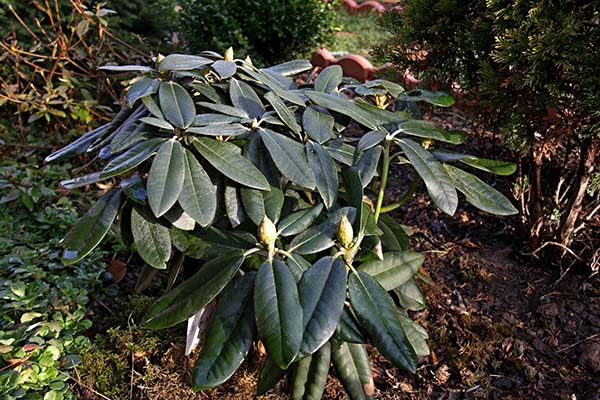
Content
- 1 What to do with rhododendrons in autumn, how to properly prepare for winter
- 2 Pruning rhododendron in the fall: when and how to prune
- 3 Top dressing of rhododendron after flowering and in autumn
- 4 Autumn watering of rhododendrons
- 5 Preparing rhododendrons for the winter: is it necessary to cover for the winter, how and what
What to do with rhododendrons in autumn, how to properly prepare for winter
Autumn care for rhododendrons includes the following activities: namely, here's what you will need to do when the bush fades:
- Break out the peduncles.
- Feed.
- Continue watering and acidifying (at the end of autumn, making water-charging watering).
- Perform anti-aging pruning (if necessary).
- Feed again (if not done after flowering).
- Shelter for the winter.
Video: care for az rhododendron in the fall and preparation for winter
Pruning rhododendron in the fall: when and how to prune
By the way! Pruning is an optional procedure for successfully growing rhododendrons.
However, still something needs to be done, and you need to figure out when and what type of pruning is best done:
- In early spring usually they carry out sanitary pruning - you need to remove all broken, frozen and dry shoots (to healthy wood or completely).
Formative pruning is also carried out in spring.... In this case, the branches are cut to the dormant buds.
- In the summer after flowering cut off the faded buds (only the seed boxes so that the plant does not waste extra energy on reproduction, but in no case the tops of the shoots: they will just start to grow, and then flower buds will form there).
- In autumn usually spend anti-aging pruning shrub, cutting out all old and bare shoots (every few years).
And in the fall, you can remove all the shoots that have dried up over the summer, i.e. carry out sanitary pruning.
Top dressing of rhododendron after flowering and in autumn
After the flowering of rhododendrons is over, it's time to feed them with phosphorus-potassium fertilizers so that the plant can recuperate after abundant flowering and lay many new flower buds.
Note! The site already has a detailed article about feeding and acidifying hydrangeas in spring, summer and autumn (for rhododendrons, everything is the same).
So, the following can be used as autumn fertilizers for rhododendrons:
- superphosphate + potassium sulfate (potassium sulfate);
- potassium monophosphate;
- special fertilizers for rhododendrons, azaleas, hydrangeas, blueberries.
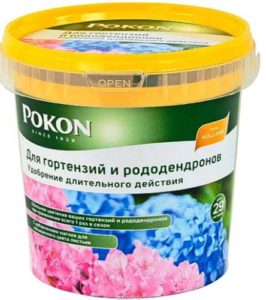
Remember! In no case should rhododendrons be fed with manure, dung or ash, because these fertilizers reduce the acidity of the soil, which is like death for a plant.
Video: how to feed rhododendrons in the fall
Acidification of the soil under rhododendrons
Rhododendrons are very fond of acidic soil, and if the soil is alkaline, then the plant will grow and bloom poorly, and winter.
By the way! The site already has detailed material about feeding and acidifying hydrangeas in spring, summer and autumn (for rhododendrons, everything is the same).
Autumn watering of rhododendrons
Rhododendrons love good watering and high humidity, and it is very important that you do not forget to water them regularly after flowering, when flower buds will be laid next year.
And already in late autumn, you must definitely make rhododendrons water charging irrigationso that they have a good winter.
Preparation rhododendrons for winter: is it necessary to cover for the winter, how and what
Rhododendron, both evergreen and deciduous, is a very frost-resistant perennial plant (flower buds can withstand frosts down to -25 ..- 40 degrees), which does not need a classic shelter for the winter, like the same roses or grapes.
By the way! Deciduous rhododendron is considered even more frost-hardy than evergreen, and it absolutely does not need any shelter (other than mulching young seedlings).
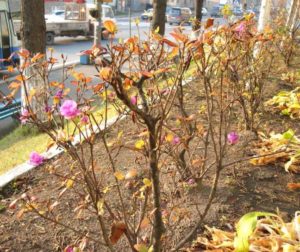
However, newly planted rhododendron bushes are still better covered for the winter. Alternatively, you can mulch the near-trunk circle of rhododendrons, first with sour high peat, and then with coniferous litter from the forest, or fresh coniferous sawdust.
As for the timing, rhododendrons do not need to be sheltered too early for the winter: you should wait for stable frosts, as is the case with roses, i.e. not earlier than the second half of October-early November.
How to properly cover rhododendrons for the winter
Indeed, most species and varieties of rhododendrons do not require any shelter from frost. Another thing is that they need to be protected from the bright early spring sun (from sunburn), and this can be done not in the fall, but already at the end of winter and early spring.
Important! If it is pointless to protect deciduous rhododendrons from sunburn, since they have no leaves, then evergreens are a must.
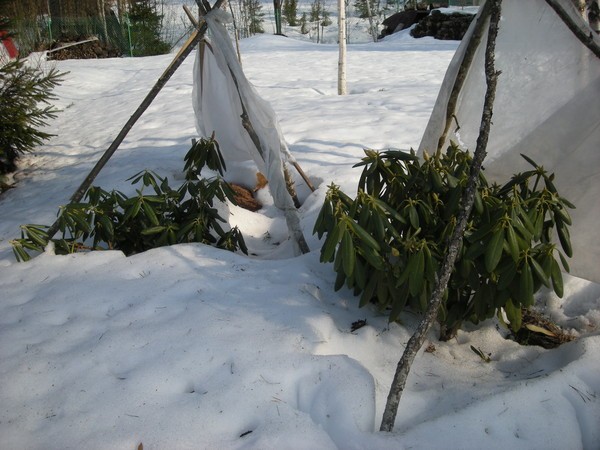
The sun shelter itself can be removed in the spring along with the onset of stable above-zero temperatures.
Video: how to cover evergreen rhododendrons for the winter
However, heavy snowfall can very easily break the twigs of an evergreen rhododendron (especially heavy wet snow), especially if it grows near the roof, so you should build a special protective shelter (including from sunburn).
So, to protect the evergreen rhododendron from snow, you need to:
- put 3-4 small slats with a hut (or stakes in the form of a wigwam) over your bush or arc (but it is better to make a cone-shaped frame so that the snow does not linger);
- cover with burlap or spunbond on top;
In no case do not use a film to cover the rhododendrons: not only does it allow the sun's rays to pass through, it also does not allow air to pass through, which means that the plant will adhere to you.
- secure it with twine wrapped around the plant.
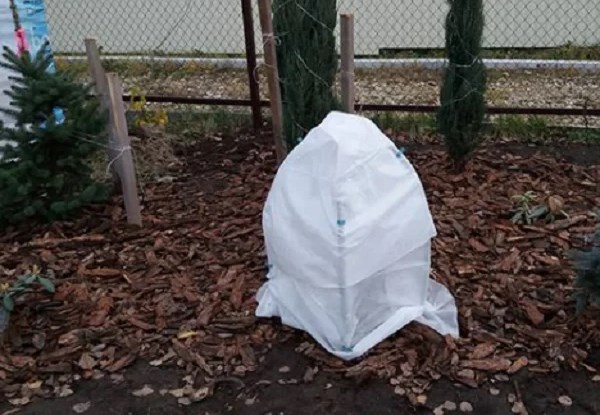
And here is another version of the frame for the protective shelter of rhododendrons from snow and sun.
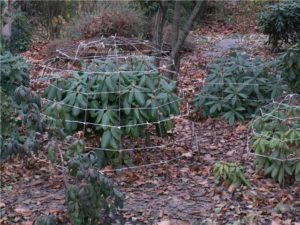
And further:
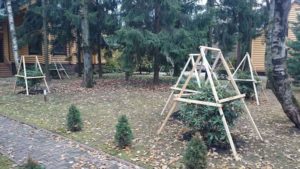
What to do if, with the onset of frost, the leaves of the rhododendrons curled and darkened
You do not need to do anything, since this is an absolutely natural reaction of the plant to the drying frosty winds, which reduces the evaporation of moisture. In other words, due to the rolling of the leaves, the rhododendron reduces the area of possible evaporation of the leaf plate.
Thus, proper autumn care for rhododendrons is the key to the lush flowering of the shrub in the new year. Yes, the plant is not the most unpretentious, but beauty, as you know, requires sacrifice (work).
Video: preparing rhododendrons for winter

